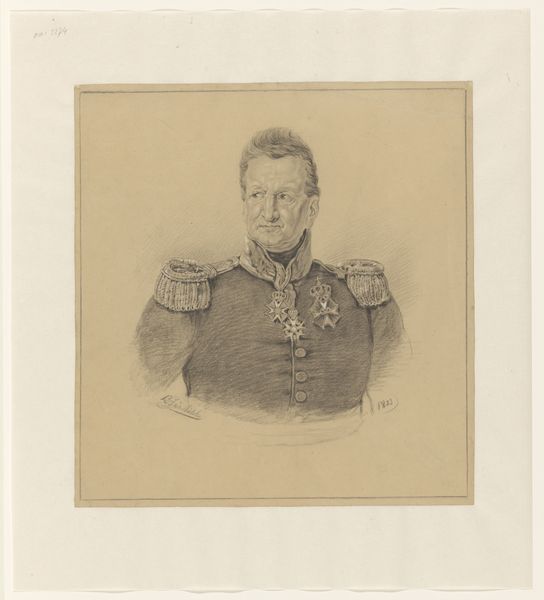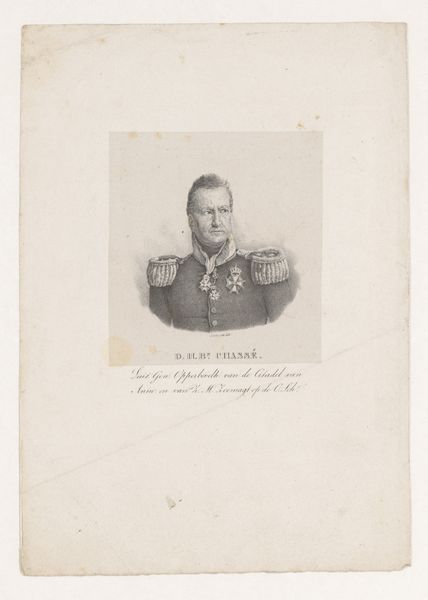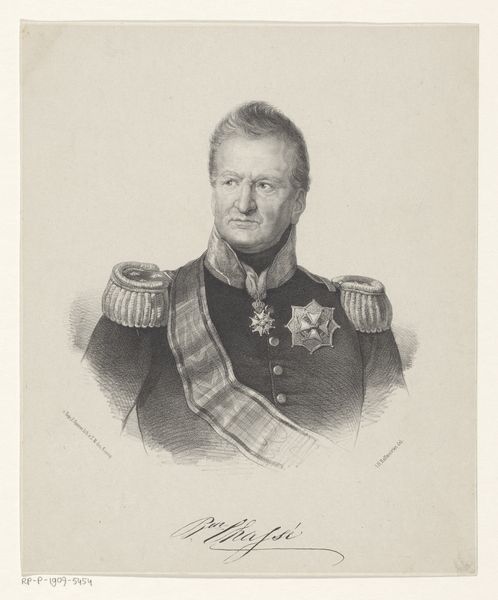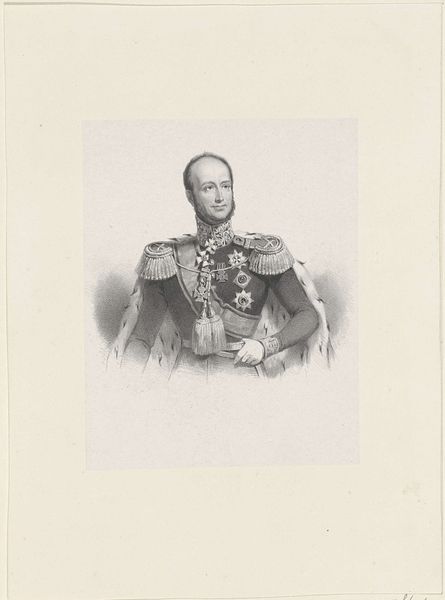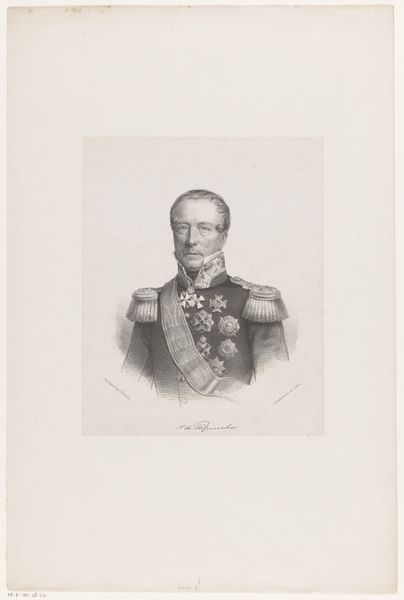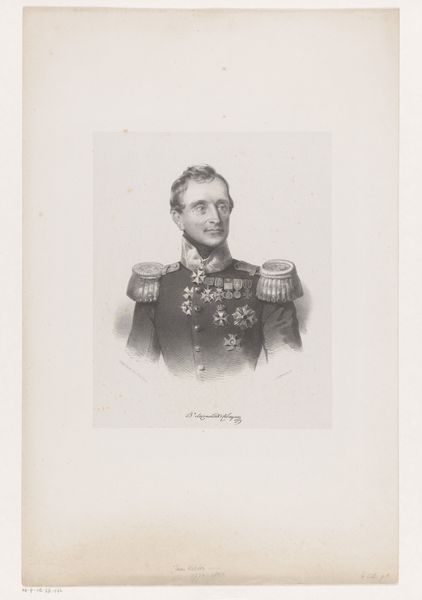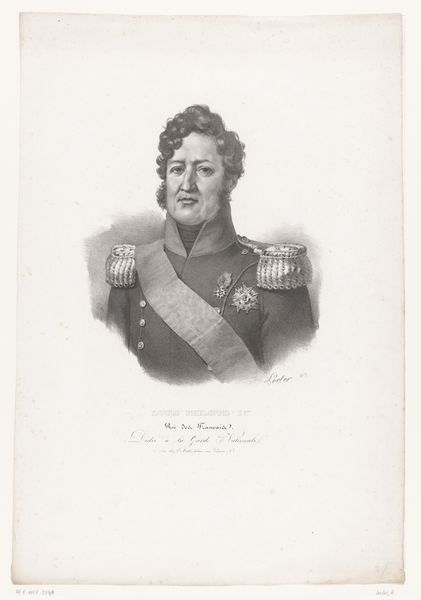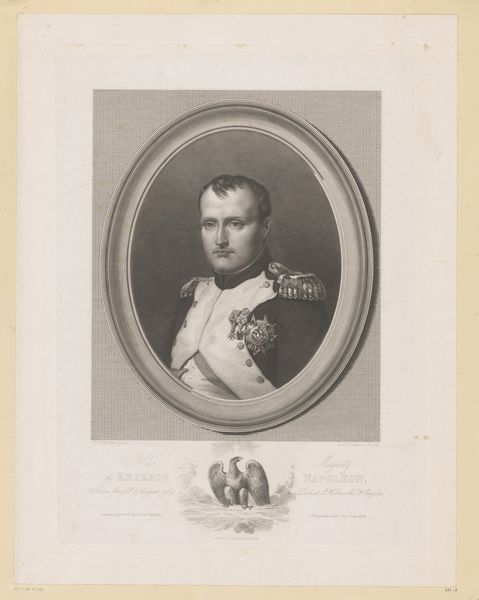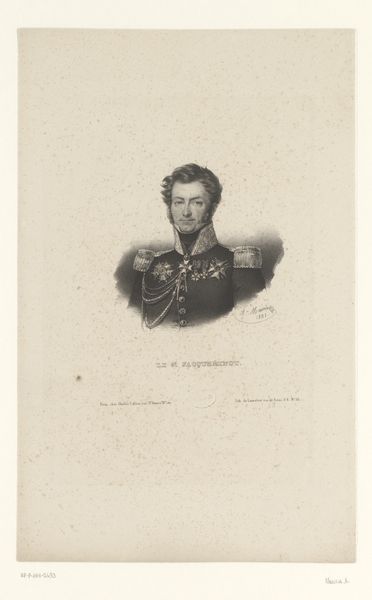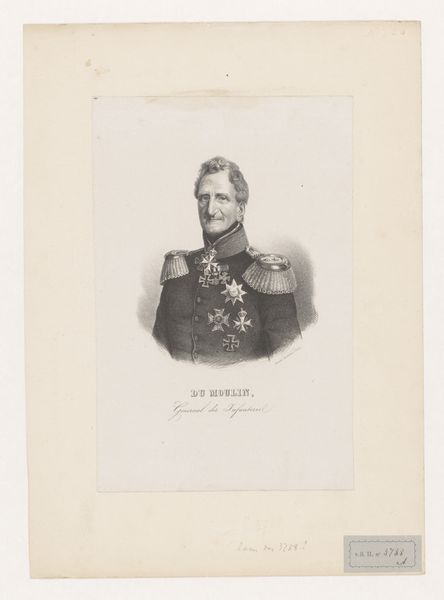
print, engraving
#
portrait
#
pencil drawn
# print
#
pencil sketch
#
figuration
#
historical photography
#
history-painting
#
academic-art
#
engraving
Dimensions: height 310 mm, width 230 mm
Copyright: Rijks Museum: Open Domain
Editor: Here we have "Portret van David Hendrik baron Chassé," dating from 1818 to 1876, credited to Carel Christiaan Antony Last. It's a print, an engraving I think. It's quite formal, imposing even. What's your interpretation of this portrait? Curator: Beyond the formal pose and the trappings of rank, I see a carefully constructed image meant to project power and legitimacy in a time of shifting national identities. Consider the dates – spanning a period of significant political upheaval. How might Chassé, a figure of the old order, have wanted to be seen, and by whom? Editor: So, you're suggesting this image is actively shaping a particular narrative? That it isn't neutral? Curator: Precisely. Every element, from the precise rendering of his military regalia to the sitter's controlled gaze, participates in crafting an identity. What ideologies does this representation serve, and who benefits from its circulation? What does it mean to portray such a figure, a symbol of authority, through the relatively accessible medium of print? Editor: The accessibility of a print does complicate the idea of elite control somewhat... Were prints like this widespread? Curator: They were, becoming key tools in disseminating ideas and solidifying social hierarchies. Think about the power dynamics inherent in viewing this portrait then, versus our encounter with it today within a museum context. Do you see shifts in meaning or implications across time? Editor: I hadn't considered the original context and audience so carefully. This wasn't just about documentation, but really about constructing and perpetuating a specific image. It definitely gives me a new perspective. Curator: It highlights how crucial it is to view portraiture as not merely reflective but also deeply constitutive of historical narratives and power structures. I leave wondering: How do such visual strategies persist into our contemporary world of digital image production?
Comments
No comments
Be the first to comment and join the conversation on the ultimate creative platform.
